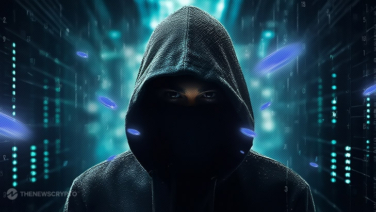With price tags in the millions of dollars and their viral followings, non-fungible tokens have risen into the mainstream consciousness over the past couple of years. However, the current market for NFTs, which use blockchain technology to create unique versions of digital art, sports memorabilia, photographs and so on, is not nearly as hot as it once was. With the crypto industry now in a bear market, investors are scurrying away from these notoriously volatile assets, sending the price of NFTs and other digital assets down, down, down.
Just like in the real world economy, crypto markets are cyclical. Indeed, digital assets have a reputation for their unprecedented volatility, with prices soaring up into the stratosphere one month and crashing back down to earth in a blazing fireball the next.
Such highs and lows can be almost unbearable for investors who’re simply looking for a quick profit, but there are many in the digital asset industry who welcome them. For those who believe in the promise of the blockchain, the lows are helpful in weeding out those projects that offer little value and are built only on hype, paving the way for those with genuine use cases to gain more traction.
Determining the value and likely longevity of any digital asset project therefore comes down to one thing. Does it have utility or not? Does it do anything useful?
There is a good reason why companies like Amazon and Google survived the dot com bust and emerged as multi-billion dollar technology powerhouse. They provide genuine use cases for their customers, who’re only too happy to pay for that utility. Amazon was the company that revolutionized online shopping and door-to-door deliveries, while Google is the organization that puts the world’s information at our fingertips. They’re both incredibly useful.
Determining Digital Utility
When it comes to digital assets, people therefore need to think about its actual utility. What does that product do, and would people be willing to pay for it? If the answer is no, then it has very little utility and is most likely building on the hype factor alone.
Unfortunately the digital asset market is full of hyped up projects that are actually standing on very wobbly foundations. One of the problems with identifying such projects, though, is that determining utility in the crypto world is trickier compared to other industries.
Blockchain aims to become the world’s most dominant technology, powering a whole bunch of different real-world activities. Proponents of the tech say it will be transformational and revolutionize everything from financial services to property ownership to collectibles to gaming. But blockchain isn’t there yet, and there’s no guarantee it ever will achieve this destiny. In that case, when assessing the utility of any digital asset it’s poignant to ask, what usefulness does this token/project actually bring to people’s lives?
It can be helpful to look at some examples of assets that are genuinely useful. Bitcoin, for example, offers utility as a store of value. It has millions of enthusiastic supporters who invest in it in the same way people buy gold, in the belief it can maintain its value, if not appreciate and get them rich. Bitcoin hasn’t quite yet achieved the stability of gold, but many people believe that it can do so one day, and if we look back at its history, it has always appreciated over the long term. So its real world use case is quite apparent – it’s a store of value and a long-term investment that many believe will ultimately pay off.
We can also highlight digital assets that lacked utility. A prescient example is Terra’s UST. This was designed to be a stablecoin asset that was unique from others such as USD Tether and USD Coin. The difference was that, rather than being an asset-backed coin (where the issuer holds an equivalent amount of real world assets to back the number of digital coins in circulation 1:1), it was an algorithmic stablecoin that was linked to a second cryptocurrency – Terra’s LUNA token. The way it worked was that LUNA would be burned to mint new UST that was brought into circulation. The idea was that traders could take advantage of the opportunity in arbitrage trading to keep the price of UST stable, pegged 1:1 with the U.S. dollar. It was an interesting concept no doubt, but there was never any real answer to the question, why use UST in the first place?
The algorithmic mechanism it employed was a clever concept but that didn’t really matter to the average crypto investors. After all, there were numerous other stablecoins that did exactly the same job – USDT, USDC, BUSD – that did exactly the same job, only with a more proven way of establishing trust. So why should an investor sell their USDC to buy UST?
The main reason UST became so popular was because of its linked DeFi protocol Anchor, which paid an incredible 20% APY to those who staked the token. It was this that powered UST’s meteoric rise, but it ultimately proved to be unsustainable. Really, the ultimate cause of Terra’s collapse was not some institutional attack as many have claimed, it was the simple lack of utility.
Terra and UST’s death spiral was painful for those who were invested in the project but the lessons learned from that disaster may well be beneficial for the digital asset space going forward. The next time someone creates a stablecoin, it won’t be enough to just explain how it works. The creators will also need to explain how it is different from other stablecoins out there, and show people why they actually need a new stablecoin.
Similarly, it seems unlikely anyone will just be able to cook up a new layer 1 blockchain or DeFi protocol without addressing questions around its utility. Already, there are dozens of promising layer 1 blockchains, and hundreds of interesting DeFi protocols. Do we really need more? The creators will need to convince people why we do.
Projects that fail to answer these questions and instead look to generate growth through hype alone will almost certainly come a cropper when market conditions deteriorate and investor’s enthusiasm dries up. Another good, failed example is Celsius Finance, a DeFi protocol that recently became insolvent. During last year’s bull market everything was rosey as Celsius had a constant influx of new money from investors who were attracted to the high rewards its staking platform offered. But when the market went into decline, those new funds quickly dried up, and it soon became clear that Celsius had overextended itself, with disastrous results for its users.
Useful Digital Assets
On the other hand, projects that focus on creating solutions to real-world problems, or those that build on the value of existing concepts, should have a bright future no matter what happens to the wider crypto market economy.
Developers are catching onto this. Today, we see numerous NFT projects emerging in the digital asset space that go beyond gimmicky, digital collectibles that provide no real value other than bragging rights. An intriguing concept is Royal, which allows people to invest in upcoming musicians by purchasing an NFT that gives them the rights to a share of a song’s royalties. If the song proves to be the next Hotel California, those royalties will grow and the value of that NFT could increase exponentially, providing generous payouts to its holder years into the future.
Another interesting use case for digital assets is to link them to the multi-billion dollar sports industry. Take Autograph, a startup backed by former NFL legend Tom Brady that has hit upon the idea of tokenizing autographs, not only from sports stars but also from other celebrities such as singers, actors and so on.
With Autograph, celebs can mint limited-edition collections of NFT-based autographs and bestow rights to those tokens. For example, the holder can get access to the star in question through Autograph’s private Discord channel, giving fans a chance to interact with their favorite stars. These interactions could even take place in person. Golf legend Tiger Woods recently announced that NFT autograph holders could compete for the chance to play a round of golf with him in person.
The idea of digitizing sports collectibles has merit. After all, sports memorabilia has grown to become a multi-million dollar industry in its own right. It’s an industry that caters to the demand from sports fans for keepsakes, souvenirs and other tokens of remembrance that have a direct connection to a famous football match or athlete. Such possessions are highly prized by enthusiastic fans. By collecting them, fans gain a direct connection to historic games and the wonderful memories they evoke, long after those moments have passed. While most fans will wear a replica of their team’s shirt to show their support, the hardcore collector won’t be satisifed unless that shirt has actually been worn – and signed – by Diego Maradona himself.
Items such as a pair of boxing gloves worn by Muhammad Ali, Barry Bond’s 756th homerun ball, or an autographed David Beckham shirt can have significant value due to their rarity and historical significance. What’s more, they rarely lose their value either – in fact, sometimes they can even gain value at a time when the economy is down on its knees.
This idea of sports memorabilia and collectibles with real-world utility carries over to the emerging world of Web3 with startups like Fanzee, which is building an NFT-powered fan engagement platform that allows sports teams to provide gamified experiences. With it, teams can create their own, branded digital ecosystems through which they can engage with fans, rewarding them with digital assets for completing challenges such as quizzes, games and puzzles.
For instance, a soccer team can ask fans to create and share a video clip of their top ten goals of the season, and provide NFT rewards that offer real-world utility. This could include tickets to an upcoming match, or a chance for fans to meet their favorite players in real life. The central idea is that Fanzee enables teams to interact with their fans on a daily basis – not just once a week when a game is played – and reward them for their loyalty.
Another project that’s merging sports with digital assets is LinksDAO, a decentralized autonomous organization that aims to sell NFTs to finance the purchase of a physical golf club and course. The LinksDAO NFTs function as membership cards and are available in two tiers – Leisure and Global. The Leisure NFTs are more affordable and provide benefits such as discounts for tee times, authentic merchandise and golf packages. Holders also get the right to vote on community governance issues. As for the Global NFTs, these are more exclusive, offering the same perks plus other benefits like membership for family members and access to official golf trips with other Global NFT holders,
Sports is just one of many examples of how digital assets can provide utility in the real world, and it’s far from the only one. The fact is that NFTs can be incredibly versatile and provide multiple unique, and extremely compelling benefits to the people who own them.
For emerging crypto projects, the blueprint for success is therefore pretty simple. They need to come up with a way to leverage their digital assets to solve real world problems, fulfill a demand, or cater to people’s enthusiasm in a way that existing solutions cannot. By putting utility at the forefront, NFT-based projects can do a lot more than just survive the crypto market crash. They can achieve true longevity by becoming essential keepsakes whose value only increases with age.








